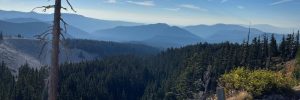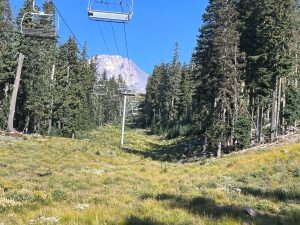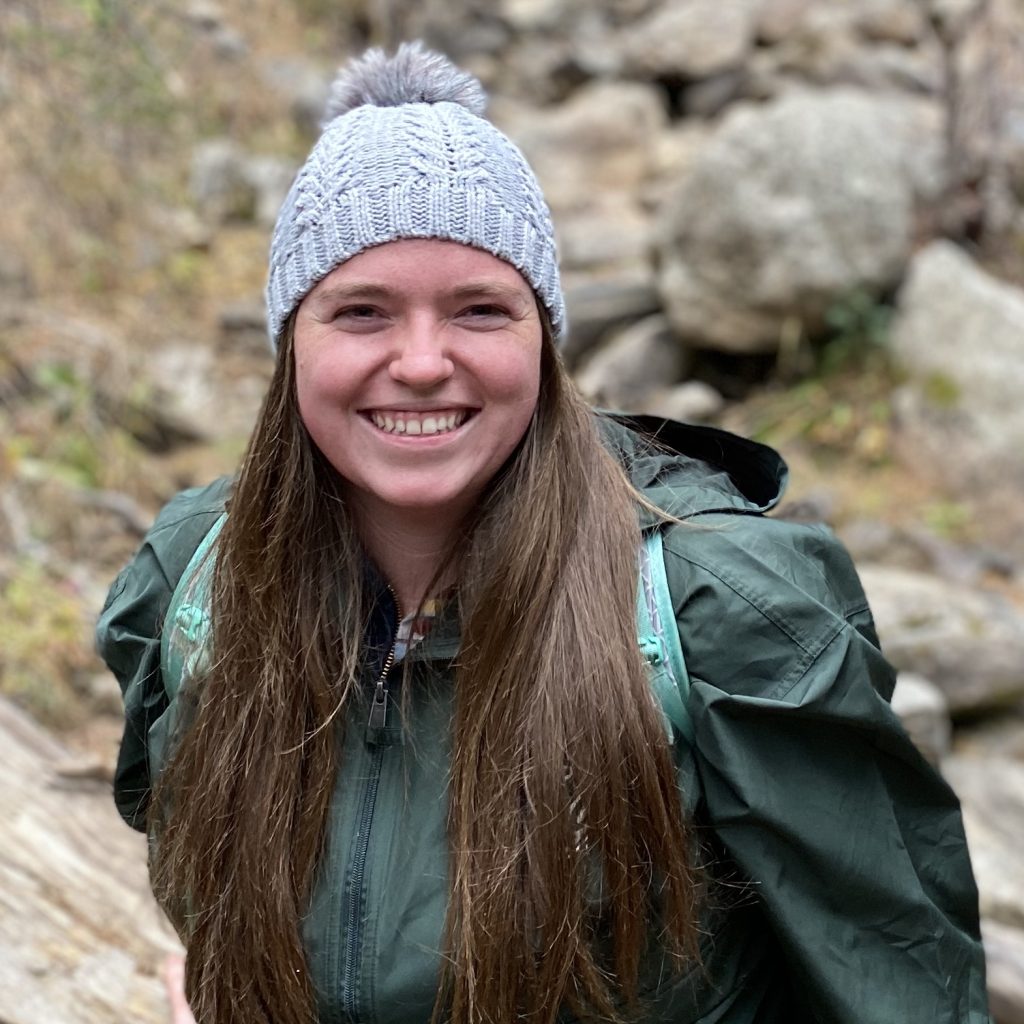The CMAT Experience
March 2023
The CMAT Experience through the eyes of a COCO team member
By Katie Dorman (she/her), Wildfire Mitigation Specialist, Coalitions & Collaboratives

In October 2022, I joined the Community Mitigation Assistance Team (CMAT) ] as an instructor in training and traveled to Mt. Hood, Oregon. The CMAT Team was requested in response to recent wildland fires and the community’s need for greater collaboration between partners in the region. As a CMAT member, it’s important to note that we are there as a third-party organization bringing in an outside perspective, offering facilitated collaboration, and assisting in the prioritization of action items tailored to the community. It’s the locals that have the hard job of taking the action plan and getting the work done on the ground. Coalitions and Collaboratives (COCO) is the hosting organization for the USFS-funded program, CMAT.
For those of you unfamiliar. “CMAT assesses the local conditions, reviews the barriers, and dives in feet first. We review what works and what does not. The team helps the local community make the necessary connections it needs to succeed and leaves it with the tools it needs to move forward. Like COCO, CMAT does not do the work for a community; instead, we facilitate positive actions.” CMAT Teams consist of professionals coming from all types of organizations across the county. These teams travel to areas with the high risk of wildland fire impact and work with everyone, from government officials to local nonprofit conservation groups, to private landowners and businesses, to create tailored community plans. In order to do this, the team’s first objective is to embed themselves within the community.
In October 2022, I didn’t know what to expect. I was meeting my team members for the first time and was about to embark on a flight to Portland, Oregon. There we would drive up to Mt. Hood, and settle in for the next 10 days. I was ready to jump right in, and like my fellow teammates, ready to NOT make any assumptions. Every community is different, and landscapes and people are unique to each area, so the team’s number one priority is NO ASSUMPTIONS. We need to shut up and listen to these communities before we can assist them with their needs.
Mt. Hood consists of a unique landscape that expects to see fire return every 700 years. Folks are not acclimated to the fire pressures that are seen in other parts of the western United States or even in eastern Oregon. Other than the landscape, there are several other factors making Mt. Hood one-of-a-kind. The City of Portland depends completely on the watershed for their clean drinking water and it is critical that the forest be protected from harmful disturbances. The area has several historically important places including the Timberline Lodge which was built by the Civilian Conservation Corps (CCC) during the great depression. Parts of the community are adjacent to wilderness-designated areas, and endangered Chinook Salmon migrate up the rivers every year.

I had not been to the Pacific Northwest before, and was struck by just how much larger and denser these trees are compared to what forests look like in Colorado. When speaking with CMAT partners and community members, I realized how scary it must have been when in 2022, several nearby wildfires (Lionshead, Beachie, and Riverside) caused areas of the community to evacuate as well as an 8-day PSPS or Public Safety Power Shutdown by Portland General Electric in 2022 – the second shutdown in two years. Through our interactions, it was clear that many people saw the need to work collaboratively, but needed help on the next steps. Partners were ready to jump in and participate, and every single member of the community had experiences and abilities that could be contributed.
In the case of the Mt. Hood Highway 26 corridor, the CMAT team realized that we would need to formulate our final recommendations in a way we had not done before. We created a Mitigation Action Plan (A Corridor to Collaboration) with two sections, the first section consisted of individualized recommendations for each of the partners in the newly forming wildfire mitigation partnership. The second section was devoted to the partnership itself and included a plan for formalizing the partnership, best practices in working together and things to watch out for that may cause the partnership to fail. With this plan we helped to clarify what every organization’s role was in mitigation and provided support for the hardest thing of all – putting a written plan into action. Now, several months after the CMAT team left Oregon, the partners have continued meeting and have shared several successes. One participant had this to say “it was a great experience for our community and I am confident that we are on a positive path forward”.
As a CMAT first-timer, I walked away with many lessons learned. I learned that it is important to challenge the narratives that we all tell ourselves, and an outside perspective can help you see the problem in a new way. A lot of times, when dealing with new situations the easy answer someone can give is no, but with work, you can get to a yes. Every CMAT assignment is different because every community is different. When a CMAT team comes together and works to understand the context of an area we can generate recommendations that will help support meaningful change.


